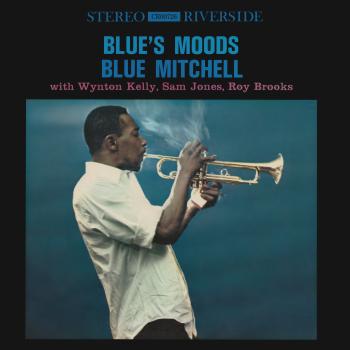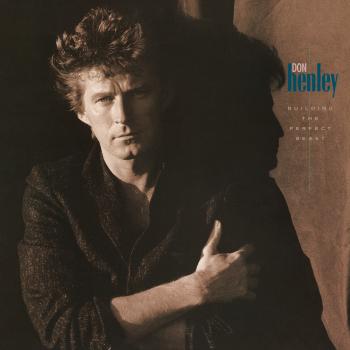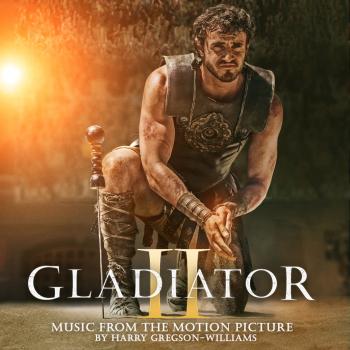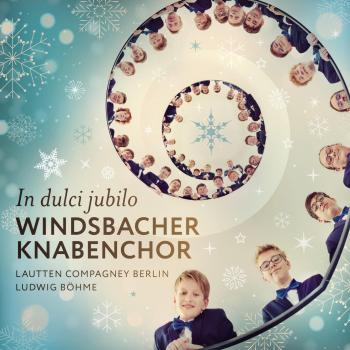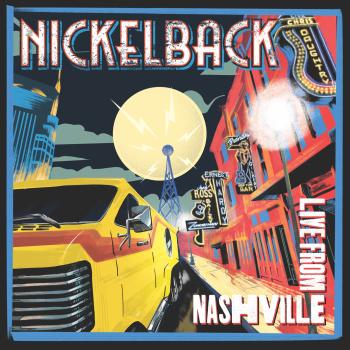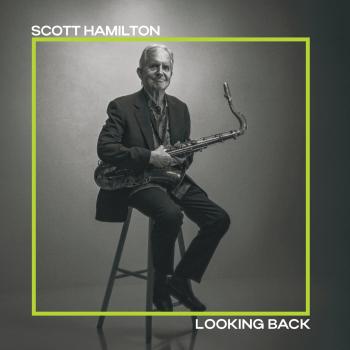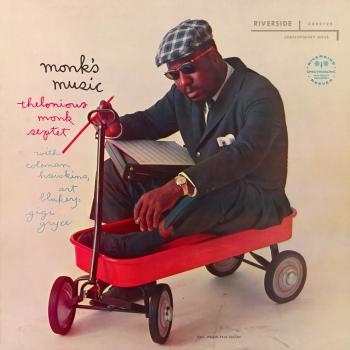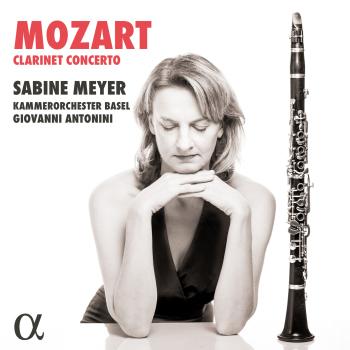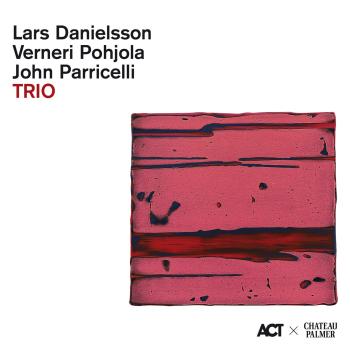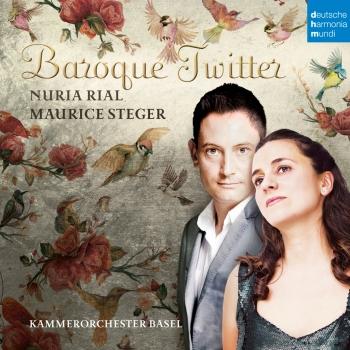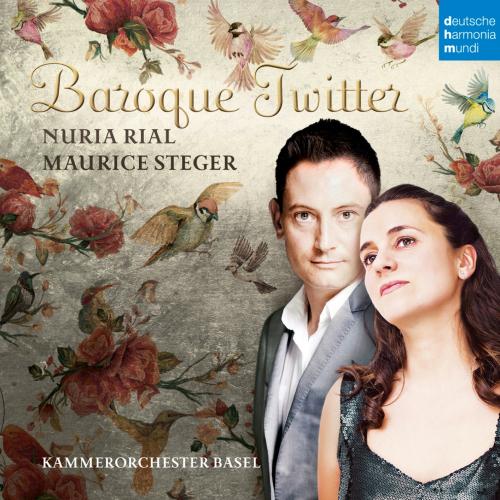
Baroque Twitter Nuria Rial & Maurice Steger
Album info
Album-Release:
2018
HRA-Release:
06.04.2018
Label: deutsche harmonia mundi
Genre: Classical
Subgenre: Vocal
Artist: Nuria Rial & Maurice Steger
Composer: Andrea Stefano Fiorè, Leonardo Vinci (1690-1730), Francesco Gasparini, Francesco Mancini (1672-1737), Pietro Torri, Tomaso Albinoni (1671-1751), Johann Adolf Hasse (1699-1783), Charles Dieupart, Antonio Vivaldi (1678-1741), Alessandro Scarlatti (1660-1725)
Album including Album cover Booklet (PDF)
I`m sorry!
Dear HIGHRESAUDIO Visitor,
due to territorial constraints and also different releases dates in each country you currently can`t purchase this album. We are updating our release dates twice a week. So, please feel free to check from time-to-time, if the album is available for your country.
We suggest, that you bookmark the album and use our Short List function.
Thank you for your understanding and patience.
Yours sincerely, HIGHRESAUDIO
- Andrea Stefano Fiorè (1686-1732):
- 1 Engelberta: Usignolo che col volo (Aria) 05:34
- Leonardo Vinci (1690-1730):
- 2 Ifigenia in Tauride, ILV 14: Rondinella che dal nido (Aria) 05:07
- Francesco Gasparini (1661-1727):
- 3 L'oracolo del fato, IFG 12: Bell'augelletto che vai scherzando (Aria) 04:43
- Francesco Mancini (1672-1737):
- 4 Sonata No. 14 in G Minor: I. Comodo 02:48
- 5 Sonata No. 14 in G Minor: II. Fuga 02:36
- 6 Sonata No. 14 in G Minor: III. Larghetto 02:54
- 7 Sonata No. 14 in G Minor: IV. Allegro 02:48
- Pietro Torri (1650-1737):
- 8 Nicomede, IPT 15: Amorosa rondinella (Aria) 07:06
- Tomaso Albinoni (1671-1751):
- 9 L'Eraclea, RosA IV.B.5.5: Zeffiretti che spirate (Aria) 03:55
- Johann Adolf Hasse (1699-1783):
- 10 Didone abbandonata, IJH 36: L'augelletto in lacci stretto (Aria) 08:35
- Charles Dieupart (1667-1740):
- 11 Concerto in A Minor, ICD 2: I. Vivace 01:25
- 12 Concerto in A Minor, ICD 2: II. Grave staccato 01:35
- 13 Concerto in A Minor, ICD 2: III. Allegro 01:35
- Antonio Vivaldi (1678-1741):
- 14 Arsilda, regina di Ponto, RV 700: Quell'usignolo ch'al caro nido (Aria) 04:33
- Alessandro Scarlatti (1660-1725):
- 15 Il giardino d'amore: Più non m'alletta e piace (Aria) 05:39
- Antonio Vivaldi:
- 16 Recorder Concerto in F Major, RV 442: I. Allegro mà non molto 03:03
- 17 Recorder Concerto in F Major, RV 442: II. Largo e cantabile 03:22
- 18 Recorder Concerto in F Major, RV 442: III. Allegro 01:37
Info for Baroque Twitter
Die spanische Sopranistin Nuria Rial und der Blockflötist Maurice Steger gehören zu den erfolgreichsten Künstlern der Alten Musik-Szene. Beide wurden bereits mit einem Echo Klassik ausgezeichnet. Wie großartig der klare Sopran von Nuria Rial mit dem Klang von Stegers Flöte zusammenpassen, zeigt ihr erstes gemeinsames Album. Mit dem vielfach ausgezeichneten Kammerorchester Basel haben sie ein von Gesängen der Vögel inspiriertes Album mit barocken Arien und Konzerten aufgenommen. Bei der Suche nach Repertoire haben sie herrliche, teils bekannte, teils bislang unerhörte Kostbarkeiten entdeckt: verträumt-verspielte Arien über die Liebe, das Verliebtsein und die Schönheiten der Natur. So klingen in Leonardo Vincis (1690-1730) Arie "Rondinella che dal nido" aus der Oper "Ifigenia in Tauride" die rasanten Arpeggien der Streicher wie wirbelnde Flügel einer Schwalbe, in Francesco Gasparinis (1661-1727) Arie "Bell'augelletto che vai scherzando" aus der Oper "L'oracolo del fato" wird der Tagesanbruch mit einem Vogelgesang von Flöte und Sopran begrüßt. Von Antonio Vivaldi (1678-1741) erklingt das Konzert für Blockflöte in F-Dur, RV 442, welches insbesondere in dessen virtuosem 3. Satz an Vogelgezwitscher erinnert. In seiner Arie "Quell'usignolo ch'al caro nido" aus der Oper "Arsilda regina di Ponto" wird, genau wie in Andrea Stefano Fiorès (1686-1732) Arie "Usignolo che col volo" aus der Oper "Engelberta", der musikalische Vogelgesang einer Nachtigall vertont. Mit weiteren Werken von Komponisten wie Francesco Mancini (1672-1737), Pietro Torri (1650 - 1737), Tomaso Albinoni (1671 - 1751) oder auch Johann Adolf Hasse (1699 - 1783) und Alessandro Scarlatti (1660 - 1725) ist "Baroque Twitter" eine spannende Reise in die barocke Dichtungs- und Klangsprache des beginnenden 18. Jahrhunderts, voll musikalischer Vielfalt und solistischer Brillanz.
Nuria Rial, Sopran
Maurice Steger, Blockflöte
Kammerorchester Basel
Stefano Barneschi, Konzertmeister
Nuria Rial
The Spanish soprano, Nuria [Núria] Rial, began her musical formation in Catalonia (where she got the Honour Prize in singing) and after, she continued her studies at the Musikhochschule in Basel with Professor Kurt Widmer, where she gets the “Solistendiplom-gesang” of the Musikhochschule der Stadt Basel. On september 2003, she got the prize “Preis der Helvetia Patria Jeunesse Stiftung”, from “Pro Europa - European Foundation for Culture”. During this period of time, she has completed her musical bagage with the counsel of such important musicians like Gérard Wyss, Leonard Stein, Christophe Coin, Sergio Azzolini, Friedrich Gürter and Oscar Ghiglia.
Nuria Rial's repertoire ranges over a variety of musical styles and genres. She has appeared as a soloist with such orchestras and ensembles as Concerto Vocale, Il Giardino Armonico, Capriccio Stravagante, Concerto Köln, Sinfonieorchester Basel, Zürcher Kammerorchester, Kammerorchester Basel, La Cetra, Barockorchester Basel, El Concierto Español, Orquesta Barroca de Sevilla, Real Filharmonia de Galicia, Orchester der Schola Cantorum Basiliensis, Orchestra Sinfonica di Milano Giuseppe Verdi, Ricercar Consort, Les Musiciens du Louvre, Akademie für Alte Musik Berlin, L’Arpeggiata, La Petite Bande, Hungarian Symphony Orchestra, La Real Cámara, Al Ayre Español and Orphénica Lyra. Conductors and instrumental players with whom she has worked include René Jacobs, Giovanni Antonini, Attiglio Cremonesi, Philippe Pierlot, Thomas Hengelbrock, Pierre Cao, Emilio Moreno, José Miguel Moreno, Salvador Mas, Antoni Ros-Marbà, Skip Sempé, Howard Griffiths, Carlo Chiarappa, Jan Schultsz, and Paul Goodwin.
Nuria Rial pursues an international career (taking in Latin America and Israel) and has been invited to the major music festivals in Weurope and South America, such as Resonanzen at the Vienna Konzerthaus, Mozart-Tage Luzern, Festival Internacional de Música y Danza de Granada, Zeit Fenster - Biennale alter Musik Berlin, Salzburg Mozart Festival, Festival de Peralada, Montreux Voice & Music Festival, Festival de Musique Ancienne du Ribeauville, Osterklang Wien.
Nuria Rial made her operatic debut at the Innsbruck Theatre, and has also appeared at La Monnaie in Brussels, the Staatsoper Unter den Linden in Berlin, the Théâtre des Champs-Élysées in Paris, and the Grand Théâtre in Geneva.
In her discography is important to mention the two CD’s that she has made with Glossa, the first one with the ensemble Orphénica Lyra conducted by the guitarrist Jose Miguel Moreno, and a second one (Claros y frescos rios), also with the same musician, that has gotten excelents critics from Gramophon, Alte Musik, Klassik Heute, and Goldberg (five stars). She has also registrated for Harmonia Mundi France. She has also sung in many concerts broadcast by the RNE (Radio Nacional de España), Catalunya Música, Bayerischer Rundfunk, DRS (Swiss-German Radio), Schweizer Radio DRS2, ORF 1 (Austria) and RAI (Italy).
Future projects include: Pamina in Die Zauberflöte at the Teatro Carlo Felice in Genova; George Frideric Handel’s Messiah with Thomas Hengelbrock in European tour; Zerlina in Don Giovanni with Sigiswald Kuijken; Jupiter and Semele by Literes with Al Ayre Espanol; G.F. Handel’s Judas Maccabeus in Zürich; a recital at the Konzerthaus in Vienna with Les Cornets Noirs; Georg Philipp Telemann’s Cantatas in Magdeburg and G.F. Handel’s Riccardo I with Kammerorchester Basel; various programs with Arpeggiata.
Maurice Steger
He has been celebrated as the "the Paganini of the recorder" by music critics and been succinctly described as "the world’s leading recorder virtuoso" (the Independent) – today Maurice Steger is one of the most fascinating recorder players, conductors and musical professors working in the sphere of Early music. In these different capacities, he thrills audiences around the world with a variety of concert formats.
Maurice Steger is an incredibly charismatic musician: spontaneous, captivating and full of energy. With his vibrant manner, intense and full instrumental sound and amazing technique, this "recorder wizard" has managed to bring to prominence the recorder as an instrument in all its fascinating forms. The 2015 ECHO Classic Award which he received as "Instrumentalist of the Year" is testimony to his success.
As a soloist, conductor or both at once, he regularly performs with the top period instrument ensembles, such as the Akademie für Alte Musik Berlin, the Venice Baroque Orchestra, the English Concert and I Barocchisti. He also performs with leading modern orchestras such as the Zurich Chamber Orchestra, the hr-Sinfonieorchester Frankfurt, the Musikkollegium Winterthur, the Berlin Baroque Soloists (Berlin Philharmonic), the Canadian Violons du Roy or the NDR Radiophilharmonie.
Chamber music plays a notable role in the richly varied spectrum of Maurice Steger's artistic endeavours. With fellow musicians and friends such as Hille Perl, Daniele Caminiti, Naoki Kitaya, Mauro Valli, Sebastian Wienand, Fiorenza de Donatis, Diego Fasolis, Sol Gabetta or the young French harpsichordist Jean Rondeau, he dedicates himself to a continuously updated repertoire of Early music. Along with early music, Maurice Steger also engages with new concert formats and contemporary compositions.
Tours of Asia and Australia have led to performances with the Australian Brandenburg Orchestra, the Malaysia Philharmonic Orchestra, the Taipei Symphony among others. He was the first recorder player from the West to perform with the Traditional Taipei Chinese Orchestra. He also regularly performs in North and South America.
His commitment to musical education is also extremely important to him: besides the directorship of the Gstaad Baroque Academy at the Menuhin Festival Gstaad which he took over in 2013 in addition to diversemaster classes he invented the character of "Tino Flautino" in order to encourage young children to playfully engage with classical music. For his latest musical fairytale, he invented "Pinocchio and the recorder player".
'Mr. Corelli in London', 'Una Follia di Napoli', 'Vivaldi: Concerti per flauto' and 'Telemann: Recorder Works' with The English Concert, I Barocchisti and the Akademie für Alte Musik Berlin: numerous award-winning CD recordings published by harmonia mundi, most of them with highly imaginative thematic concepts, are a long-standing testament to the unique prominence achieved by this artist. In autumn 2016 his newest project “Souvenirs d’Italie” will be released with various works from manuscripts of Earl of Harrach. In spring 2018, a duo album with Nuria Rial with accompaniment by the Basel Chamber Orchestra will be released featuring Italian. The program will also be presented in chamber music concerts.
Booklet for Baroque Twitter


